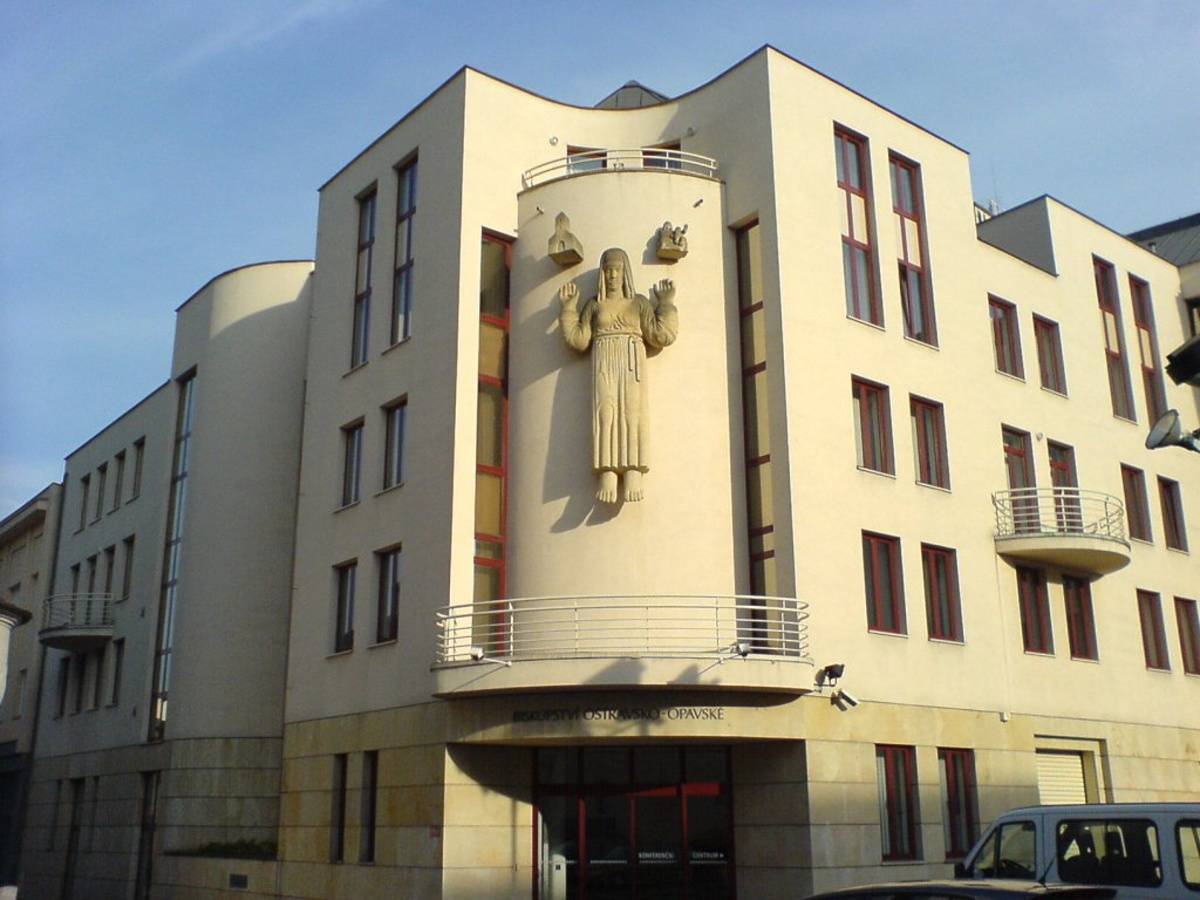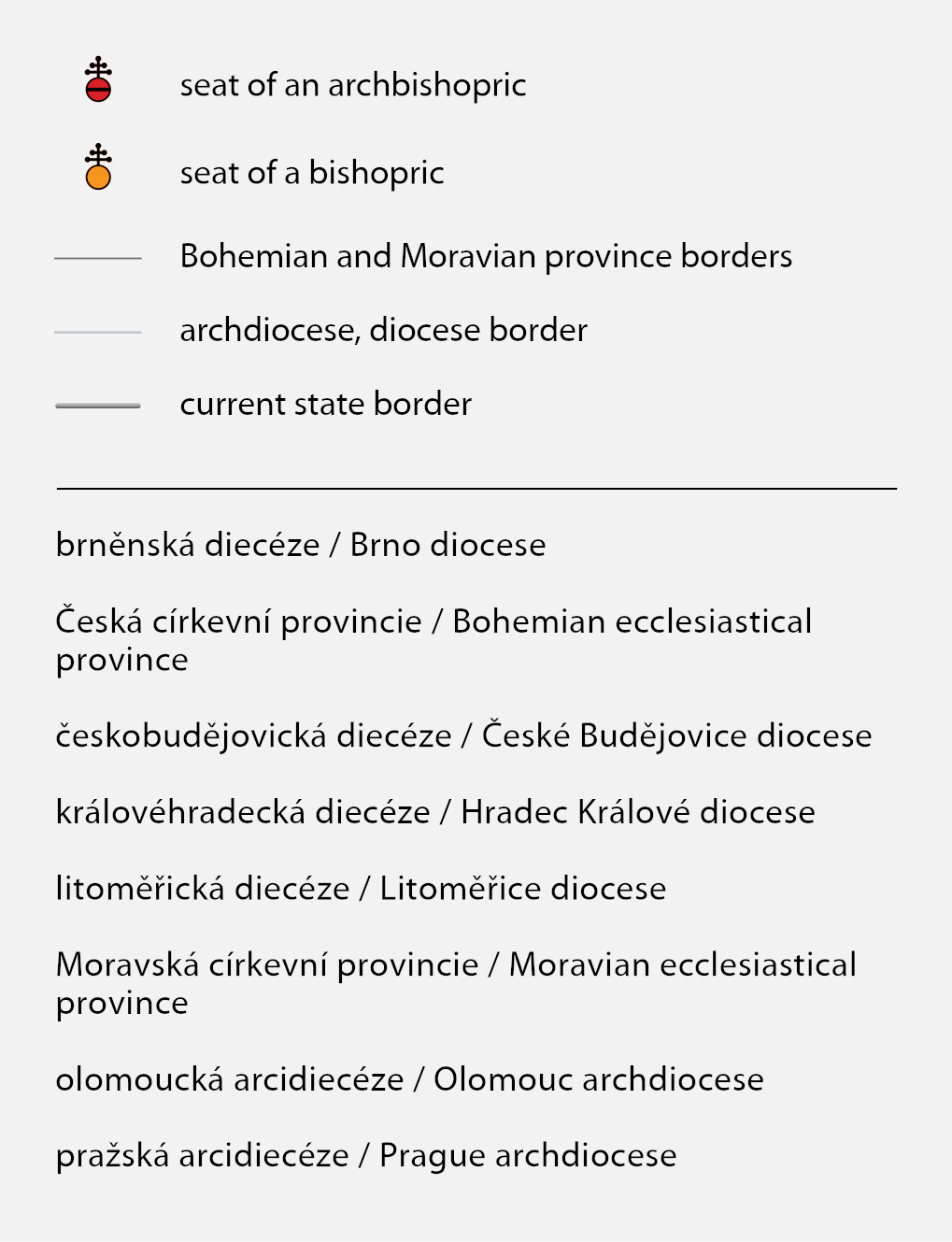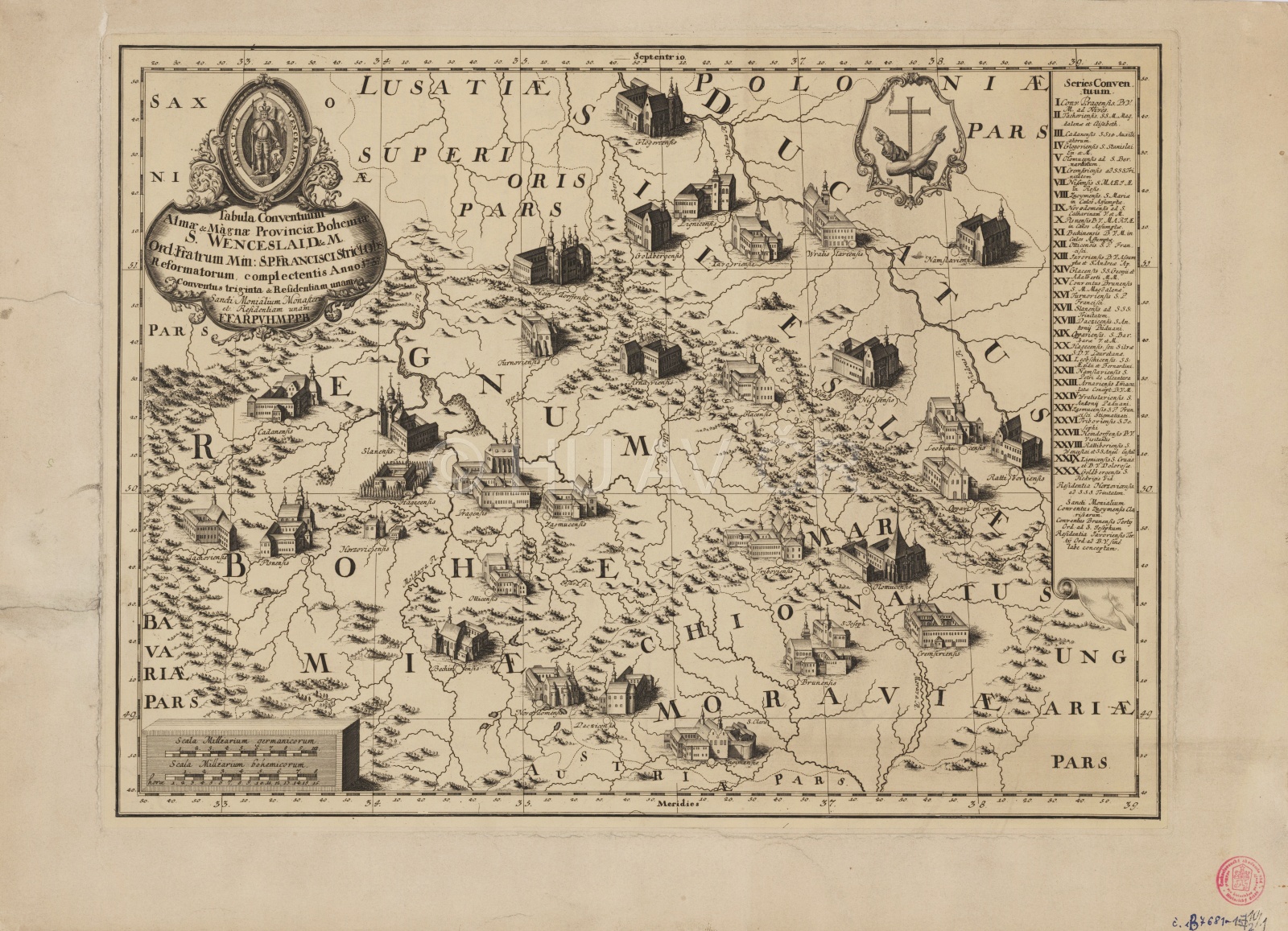Roman Catholic ecclesiastical administration until 1930
After the establishment of Czechoslovakia, the ecclesiastical administration had to be adapted to the new situation, especially in Slovakia and Subcarpathian Ruthenia. In the Czech Lands, the issues concerned affiliation of Kłodzko to the Prague archdiocese or attachment of the regions of Hlučín, Vitoraz and Valtice (unresolved until 1937) or separation of Cieszyn Silesia. Within the non-Catholic religions, the Evangelical Church of Czech Brethren was established at the end of 1918 and the Czechoslovak Church (at present Czechoslovak Hussite Church) in 1920. In 1928, an agreement was concluded with the Vatican governing mutual relations, appointment of bishops and modification of the diocese borders in accordance with the state borders. Further modifications of ecclesiastical administration took place after the annexation of the borderland in 1938.

The Bethlehem Chapel in Žižkov (Prague), built between 1912 and 1914 in the Cubist style. Wikimedia Commons. Available here, [26/12/2020].
References
Boháč, Z.: Atlas církevních dějin českých zemí 1918–1999. Kostelní Vydří 1999;
Semotanová, E. – Zudová-Lešková, Z. ‒ Močičková, J. – Cajthaml, J. ‒ Seemann, P. ‒ Bláha, J. D. a kol.: Český historický atlas. Kapitoly z dějin 20. století. Praha 2019.

This work is licensed under a Creative Commons BY-NC-ND 4.0
Roman Catholic ecclesiastical administration until 1990
The ecclesiastical administration was restored to the condition of 1938 at the end of World War II. Following the February Coup of 1948, state supervision over the churches was established and the church property was nationalized. The church was subjected to repressions and relations with foreign countries and the Vatican were terminated. The situation briefly changed in 1968 when some of the vacated episcopal seats were manned again. In 1972, Kłodzko was definitely relocated from the administration of Prague archdiocese under the administration of Wrocław archdiocese. Conversely, in 1977, the regions of Cieszyn Silesia and Javorník passed under administration of the Olomouc archdiocese.

The interior of the centralization monastery in Broumov, one of the places of the internment of members of church orders after 1948. Photo Daniel Baránek. Wikimedia Commons. Available here, [26/12/2020].
References
Boháč, Z.: Atlas církevních dějin českých zemí 1918–1999. Kostelní Vydří 1999;
Semotanová, E. – Zudová-Lešková, Z. ‒ Močičková, J. – Cajthaml, J. ‒ Seemann, P. ‒ Bláha, J. D. a kol.: Český historický atlas. Kapitoly z dějin 20. století. Praha 2019.

This work is licensed under a Creative Commons BY-NC-ND 4.0
Roman Catholic ecclesiastical administration until 1993
After 1990, diplomatic contacts with the Vatican were re-established and the Czechoslovak (Czech after 1993) Episcopal Conference was established. After many centuries, a new diocese was established in 1993 when the district of a new Plzeň diocese was created from the west part of the Prague archdiocese, Klatovy and Domažlice from the České Budějovice diocese and several parishes from the Litoměřice diocese. There were further minor modifications of other Czech dioceses and the vicariate districts.

With the establishment of the Pilsen Diocese in 1993, the parish church of St. Bartholomew in Pilsen was promoted to a cathedral, the seat of Bishop of Pilsen. Wikimedia Commons. Available here, [26/12/2020].
References
Boháč, Z.: Atlas církevních dějin českých zemí 1918–1999. Kostelní Vydří 1999;
Semotanová, E. – Zudová-Lešková, Z. ‒ Močičková, J. – Cajthaml, J. ‒ Seemann, P. ‒ Bláha, J. D. a kol.: Český historický atlas. Kapitoly z dějin 20. století. Praha 2019.

This work is licensed under a Creative Commons BY-NC-ND 4.0
Roman Catholic ecclesiastical administration until 1996
In 1996, the development of the Catholic ecclesiastical administration culminated in the establishment of the Ostrava-Opava diocese based in Ostrava, consisting of the north-east part of the Olomouc archdiocese (including the regions of Javorník and Těšín). After 2004, reforms affected the lower level of ecclesiastical administration in particular by combining the parishes. In 1997, the Apostolic Exarchate was established in Prague as an administration unit of the Greek Catholic Church. The Czechoslovak Hussite Church consists of five dioceses (Prague, Hradec Králové, Plzeň, Olomouc and Brno). The Evangelical Church of Czech Brethren comprises 14 administration districts.

Building of the Ostrava-Opava bishopric from 2000. Photo Lukáš Mižoch, 2006.
References
Boháč, Z.: Atlas církevních dějin českých zemí 1918–1999. Kostelní Vydří 1999;
Semotanová, E. – Zudová-Lešková, Z. ‒ Močičková, J. – Cajthaml, J. ‒ Seemann, P. ‒ Bláha, J. D. a kol.: Český historický atlas. Kapitoly z dějin 20. století. Praha 2019.

This work is licensed under a Creative Commons BY-NC-ND 4.0

